AP Art History - Unit 7 Identifiers
1/10
Earn XP
Description and Tags
All the identifiers in Unit 7. From the Course Description Order. Images 181-191
Name | Mastery | Learn | Test | Matching | Spaced |
|---|
No study sessions yet.
11 Terms
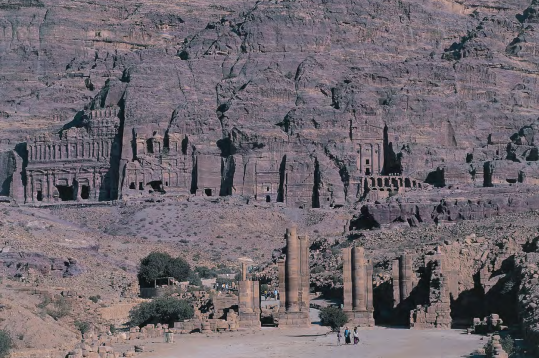
Petra, Jordan: Treasury and Great Temple
Date of creation: 400 BC - 100 CE
Culture: Nabatean Ptolemaic and Roman
Original Location: Petra, Jordan
Movement: N/A
Media/Materials: Cut rock
Function: A central hub along the Nabataen trade route.

Buddha
Date of creation: 400-800 CE, Destroyed in 2001
Culture: Gandharan
Original Location: Bamiyan, Afghanistan
Movement: N/A
Media/Materials: Cut rock with plaster and polychrome paint
Function: Commerce and religious center
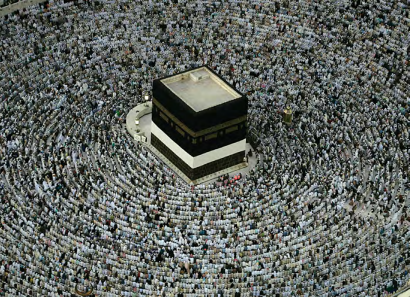
The Kaaba
Date of creation: 631-632 CE
Culture: Islam
Original Location: Mecca, Saudi Arabia
Media/Materials: Granite masonry, covered with a silk curtain and calligraphy in gold and silver-wrapped thread
Function: A spiritual and pilgrimage center for Islam.
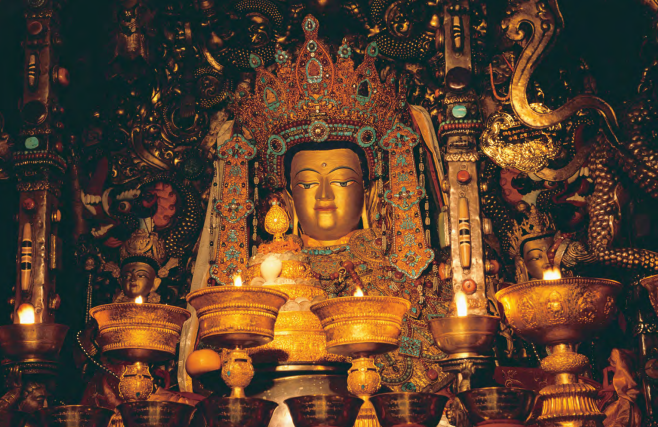
Jowo Rinpoche, enshrined in the Jokhang Temple
Date of creation: 641 CE
Patron (?): Jowo Rinpoche
Original Location: Lhasa, Tibet
Movement:
Media/Materials: Gilt metal with semi-precious stones and paint
Function: The oldest and most important temple in Tibet
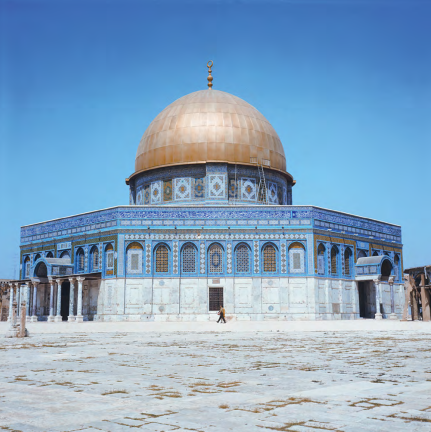
Dome of the Rock (Qubbat al Sakhra)
Date of creation: 691-692 CE
Patron: Caliph Abd al-Malik
Original Location: Jerusalem, Islamic Umayyad
Media/Materials: Stone masonry and wood roof decorated with glazed ceramic tile, mosaics, and gilt aluminum and bronze dome.
Function: One of the first Islamic buildings ever made to be a religious focal point for his supporters.
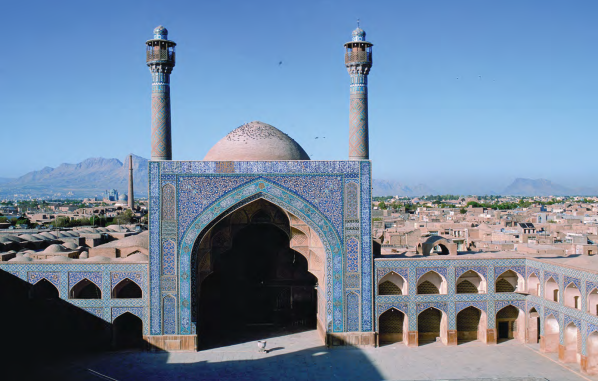
Great Mosque (Masjid-e Jameh)
Date of creation: 700 CE with restorations and additions in the 14, 18, and 20th centuries.
Artist:
Original Location: Isfahan, Iran
Movement:
Media/Materials: Stone, brick, wood, plaster, and glazed ceramic tile
Function: Serves as a central hub of religion and commerce.Folio from a Qur’an
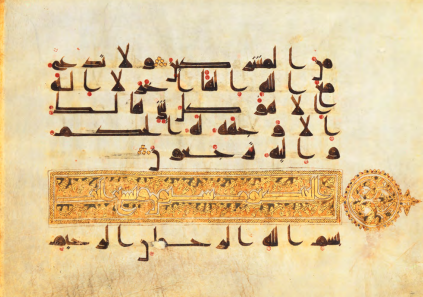
Folio from a Qur’an
Date of creation: 8th - 9th century CE
Original Location: Arabia, North Africa, or Near East
Media/Materials: Ink, color, and gold on parchment
Function: The oldest surviving Qur’an, the Islamic book of faith.
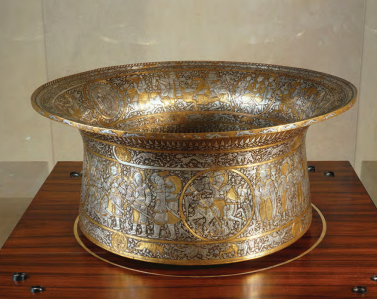
Basin (Baptistére de St. Louis)
Date of creation: 1320-1340 CE
Artist: Muhammad ibn al-Zain
Original Location:
Movement:
Media/Materials: Brass inlaid with gold and silver
Function: May have been used as a banqueting dish or for ritual hand washings (ablutions)
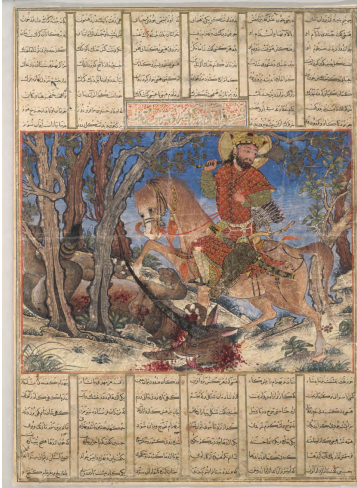
Bahram Gur Fights the Karg, folio from the Great Il-Khanid Shahnama
Date of creation: 1310-1340 CE
Artist: Il’Khanid
Original Location: Islamic Persia
Media/Materials: Ink, opaque, watercolor, gold, and silver on paper
Function: Describe the story of Bahram Gur, an Iranian king.
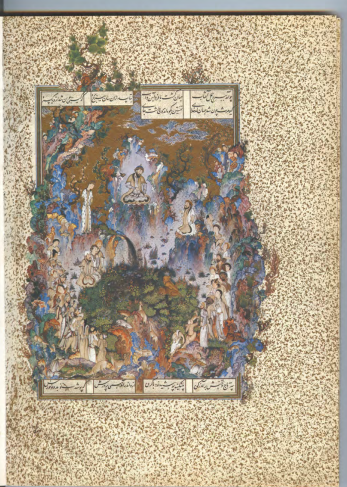
The Court of Gayumars, folio from Shah Tahmasp’s Shahnama
Date of creation: 1522-1525 CE
Artist: Workshop of Sultan Muhammad
Original Location: Tabriz, Iran
Media/Materials: Ink, opaque watercolor, and gold on paper
Function: Depict an event from Shahnamn, in which the first king of Persia (Gayumars) is surrounded by his court.

The Ardabil Carpet
Date of creation: 1539-1540 CE
MAYBE Patron: Shah Tahmasp
Original Location: Maqsud of Kashan
Movement:
Media/Materials: Silk and wool
Function: Created for a shrine